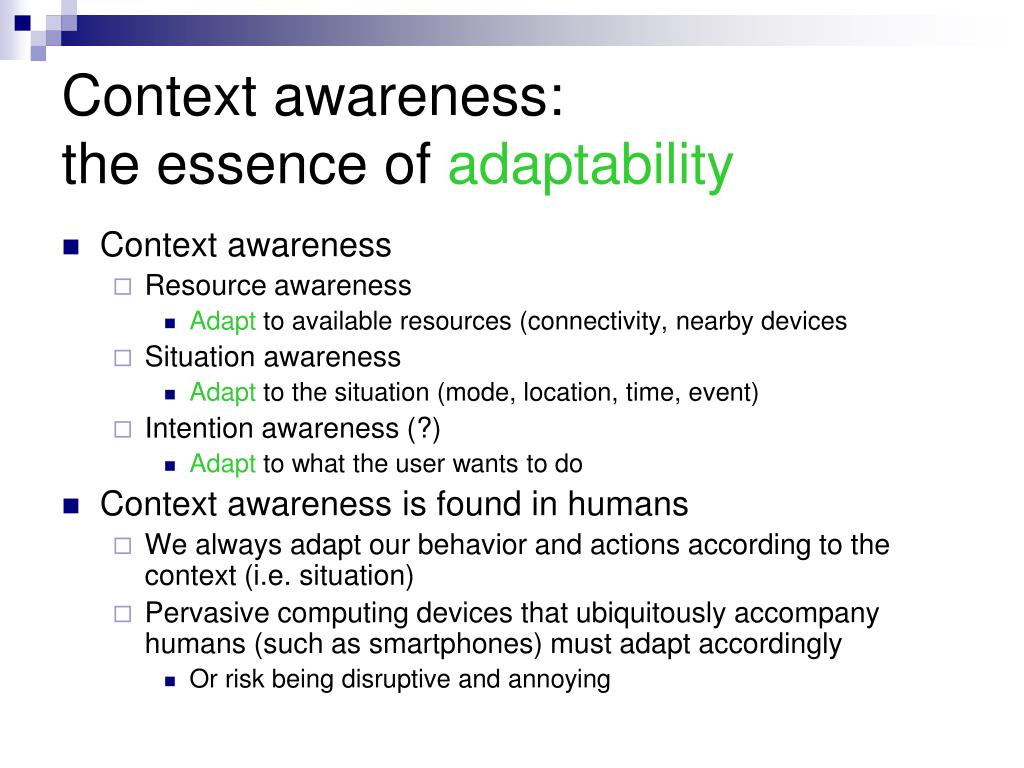
Find the app id associated with the application you just created.Go to ContextHub and create a new Awareness application.Get started by either forking or cloning the Awareness repo.
Awareness contexts how to#
You will be shown examples of how to use each of these objects in your own context rules to speed up development when using ContextHub. This allows for the creation of new contextual elements, sending push notification to devices, storing data in the vault, logging a message to the console, or firing a webhook to your own or other web services. In ContextHub, this power is best expressed in context rules, little snippets of JavaScript which are evaluated when every event is fired. The heart and true purpose of ContextHub involves creating contextual experiences which can be changed without redeploying your application to Google Play, allowing far greater developer flexibility during development. This gives you additional flexibility over the payload property as you can define your own events for your own application. These context rules are triggered by custom events defined by you, the developer, and can be triggered with an API command that allows you to send your own data structures similar to those seen in pre-defined events like beacon_in/beacon_out. In this sample application, we use ContextHub to write context rules in the developer portal so you can learn to interact with the different objects available to you after an event has been triggered.

This sample application will show you how to use the provided contextual objects in a context rule via custom events and set off running those context rules via triggered events in the ContextHub SDK ContextHub Use Case The Awareness sample app introduces you to the contextual rule features of the ContextHub Developer Portal.


 0 kommentar(er)
0 kommentar(er)
